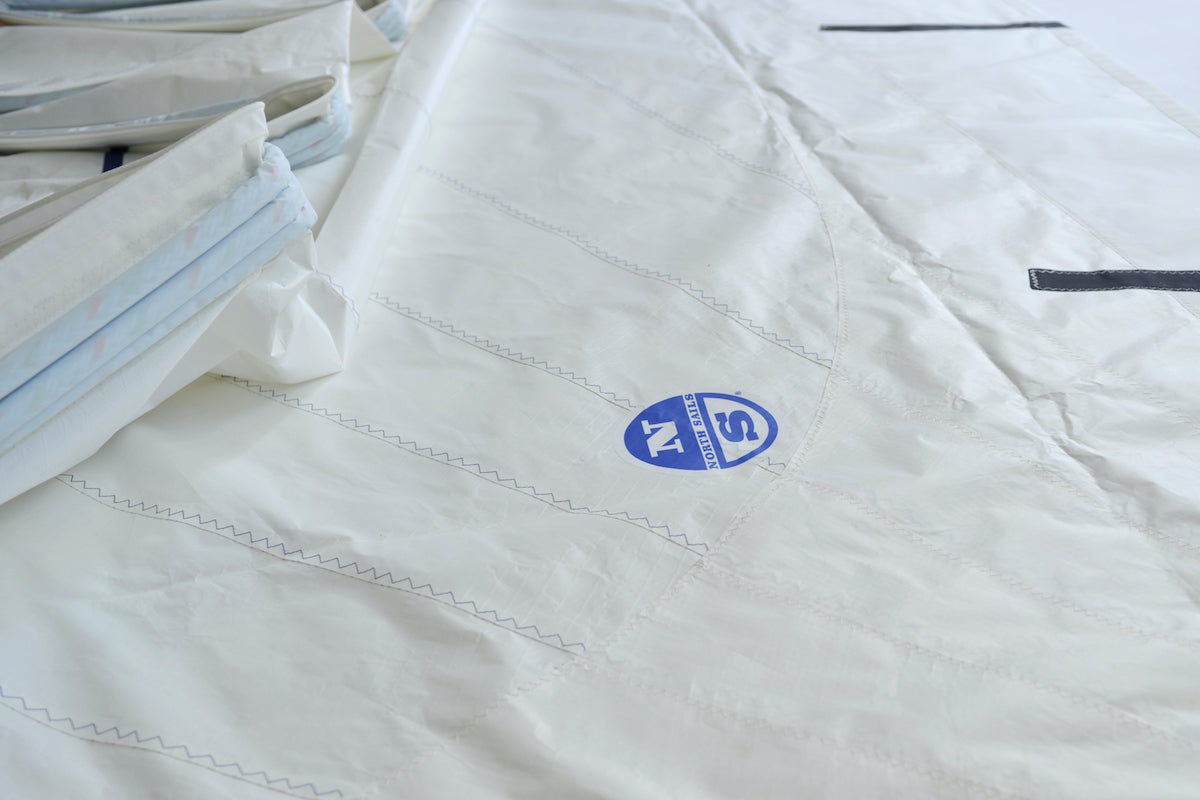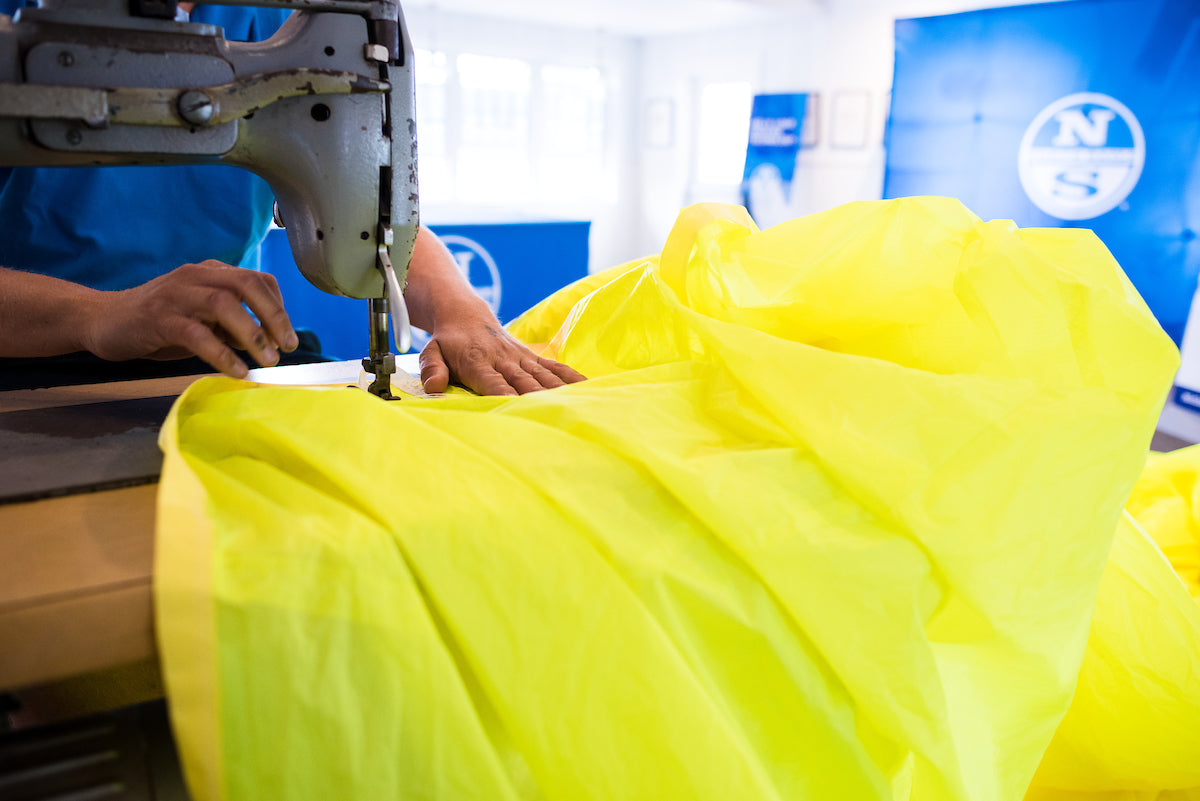SAIL CARE & MAINTENANCE TIPS
SAIL CARE & MAINTENANCE TIPS
Ways You Can Protect Your Investment

There are many ways you can help prolong the life of your sails. Here are some pointers to keep you aligned with our sail care maintenance practices, which can be part of your regular routine while on your own whether you are at home, or on your boat. Preserving the life of your sails is important for performance and you can take these guidelines to help protect your investment.
- Avoid prolonged flogging of sails. Flogging and leech flutter can degrade a sail’s performance before its time. Minimize motoring into the wind with flapping sails. After hoisting sails, trim promptly and steer a course so the sails fill rather than flog.
- Use your sails in their designed wind ranges. If you don’t know the recommended wind ranges for your sails, contact your North sailmaker.
- Adjust your leech line to eliminate leech flutter (tension it just a touch more than necessary to stop the flutter). The tension needed will change as the breeze increases and as the jib sheet is adjusted. Do not over-tension the leech line; if the leech becomes hooked, ease it off. Proper placement of genoa cars will also prevent leech flogging on your genoa.

- Avoid unnecessary contact between sails and standing rigging. Avoid releasing the genoa sheet late in a tack. Backwinding the leech against the windward spreader tip will distort the leech and can split your sail.
- To combat chafe, be sure to cover spreader ends, and check there are no exposed split pins, cotter pins, or other sharp edges around the mast, foredeck, lifelines, and turnbuckles. These can chafe and/or tear your sail.
- Make sure your sails have extra reinforcement in areas of high chafe. Spreader patches on overlapping genoas and mainsails, as well as extra chafe protection on headsails where they come in contact with mast mounted radars and stanchions, will extend the useful life of your sail.

- When leaving the boat, ease the jib halyard, main halyard, and outhaul to prevent permanent luff and foot stretching. Releasing batten tension also reduces distortion at the batten ends
- Limit exposure to the sun for extended periods of time. UV rays are one of your sail’s worst enemies. Roller furling genoas should have UV-resistant material covering the leech and foot. If you store your mainsail on the boom, make sure it is always covered when not in use.
- Rinse your sails with fresh water and dry thoroughly before storing, to prevent mildew and color bleeding in spinnakers. Rinse fittings in fresh water to help prevent corrosion. Store dry sails in a well-ventilated location. And remember, making sure they are dry is as important as the initial rinse. Wet sails create mold issues.
- Avoid folding sails on the same fold lines so that small creases don’t become permanent.

- Remove mildew stains on polyester, Spectra/Dyneema or Vectran sails promptly. Use a mild household bleach solution with water and a soft cloth, then rinse thoroughly. DO NOT USE BLEACH ON NYLON, ARAMID, OR LAMINATED SAILS.
- To remove oil/grease stains, scrub with Simple Green and a soft brush, then rinse. Follow with a mild soap scrub and rinse to remove the Simple Green completely from the sail. Be careful not damage the sail with excessive scrubbing. Depending on the stain, you may not be able to remove it completely.
- Removing rust stains is tricky. We recommend that you contact your North Certified Service expert for treatment. We may not be able to completely get rid of it, but we can make sure the area is still in good working order.
- Regularly rinse sail bag zippers or lubricate with silicone spray.
- Patch minor tears as soon as possible with a pressure sensitive adhesive (PSA). Avoid using duct tape!
- Check nylon/polyester downwind sails a few times each season for small tears. Catching small holes early can reduce the chance of them becoming bigger tears later on.
- Spray luff tapes on both genoas and mainsails as they slide up the track, using a Mclube-style lubricant. This will help clean the tracks and make hoisting and dousing easier.

- Check battens for splintering. Splintered battens should be replaced, or at least taped, so the splinters don’t harm the sail.
- Check luff slides and other hardware to make sure they are still securely attached to the sail.
- Check seam stitching to make sure it is still intact. UV can quickly damage certain threads.
- Have your North Sail Certified Service expert inspect your sails at least once a season. Regular inspection will prevent small problems from becoming big ones. You can also ask your local loft to create an onboard sail repair kit for your specific sails.
- Keep a sail log. Photographing your sails on a regular basis and logging the hours they are used will help you and your sailmaker evaluate your sail inventory seasonally. Your sail photos can also be digitized and analyzed using North’s SailScan computer program. Contact your North representative for details.




























